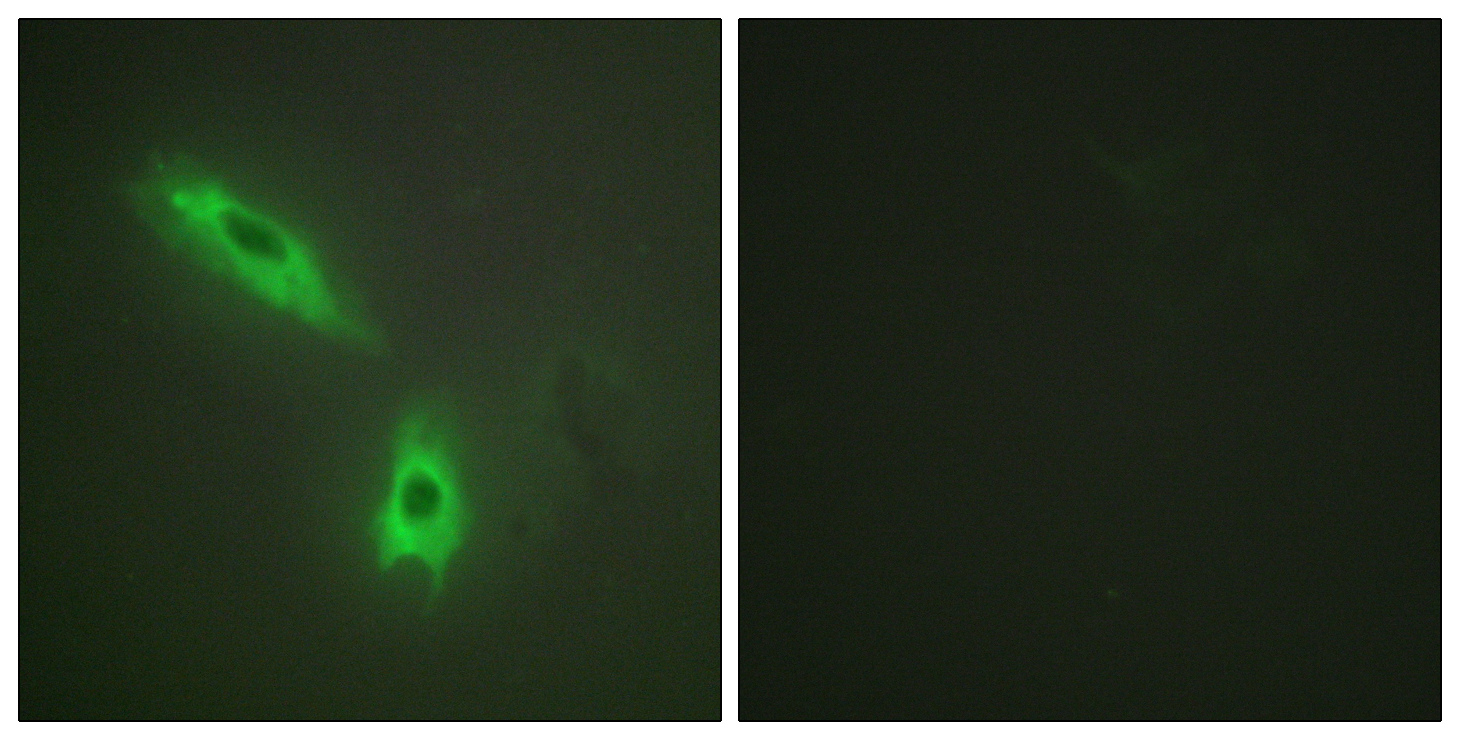LT-β Polyclonal Antibody
- Catalog No.:YT2601
- Applications:WB;IF;ELISA
- Reactivity:Human;Mouse
- Target:
- LT-β
- Fields:
- >>Cytokine-cytokine receptor interaction;>>NF-kappa B signaling pathway;>>Rheumatoid arthritis
- Gene Name:
- LTB
- Protein Name:
- Lymphotoxin-beta
- Human Gene Id:
- 4050
- Human Swiss Prot No:
- Q06643
- Mouse Gene Id:
- 16994
- Mouse Swiss Prot No:
- P41155
- Immunogen:
- The antiserum was produced against synthesized peptide derived from human TNFC. AA range:181-230
- Specificity:
- LT-β Polyclonal Antibody detects endogenous levels of LT-β protein.
- Formulation:
- Liquid in PBS containing 50% glycerol, 0.5% BSA and 0.02% sodium azide.
- Source:
- Polyclonal, Rabbit,IgG
- Dilution:
- WB 1:500 - 1:2000. IF 1:200 - 1:1000. ELISA: 1:10000. Not yet tested in other applications.
- Purification:
- The antibody was affinity-purified from rabbit antiserum by affinity-chromatography using epitope-specific immunogen.
- Concentration:
- 1 mg/ml
- Storage Stability:
- -15°C to -25°C/1 year(Do not lower than -25°C)
- Other Name:
- LTB;TNFC;TNFSF3;Lymphotoxin-beta;LT-beta;Tumor necrosis factor C;TNF-C;Tumor necrosis factor ligand superfamily member 3
- Observed Band(KD):
- 22kD
- Background:
- Lymphotoxin beta is a type II membrane protein of the TNF family. It anchors lymphotoxin-alpha to the cell surface through heterotrimer formation. The predominant form on the lymphocyte surface is the lymphotoxin-alpha 1/beta 2 complex (e.g. 1 molecule alpha/2 molecules beta) and this complex is the primary ligand for the lymphotoxin-beta receptor. The minor complex is lymphotoxin-alpha 2/beta 1. LTB is an inducer of the inflammatory response system and involved in normal development of lymphoid tissue. Lymphotoxin-beta isoform b is unable to complex with lymphotoxin-alpha suggesting a function for lymphotoxin-beta which is independent of lympyhotoxin-alpha. Alternative splicing results in multiple transcript variants encoding different isoforms. [provided by RefSeq, Jul 2008],
- Function:
- function:Cytokine that binds to LTBR/TNFRSF3. May play a specific role in immune response regulation. Provides the membrane anchor for the attachment of the heterotrimeric complex to the cell surface. Isoform 2 is probably non-functional.,similarity:Belongs to the tumor necrosis factor family.,subunit:Heterotrimer of either two LTB and one LTA subunits or (less prevalent) one LTB and two LTA subunits.,tissue specificity:Spleen and thymus.,
- Subcellular Location:
- Membrane ; Single-pass type II membrane protein .
- Expression:
- Spleen and thymus.
- June 19-2018
- WESTERN IMMUNOBLOTTING PROTOCOL
- June 19-2018
- IMMUNOHISTOCHEMISTRY-PARAFFIN PROTOCOL
- June 19-2018
- IMMUNOFLUORESCENCE PROTOCOL
- September 08-2020
- FLOW-CYTOMEYRT-PROTOCOL
- May 20-2022
- Cell-Based ELISA│解您多样本WB检测之困扰
- July 13-2018
- CELL-BASED-ELISA-PROTOCOL-FOR-ACETYL-PROTEIN
- July 13-2018
- CELL-BASED-ELISA-PROTOCOL-FOR-PHOSPHO-PROTEIN
- July 13-2018
- Antibody-FAQs
- Products Images

- Western Blot analysis of various cells using LT-β Polyclonal Antibody

- Immunofluorescence analysis of HeLa cells, using TNFC Antibody. The picture on the right is blocked with the synthesized peptide.

- Western blot analysis of lysates from HepG2 cells, using TNFC Antibody. The lane on the right is blocked with the synthesized peptide.



